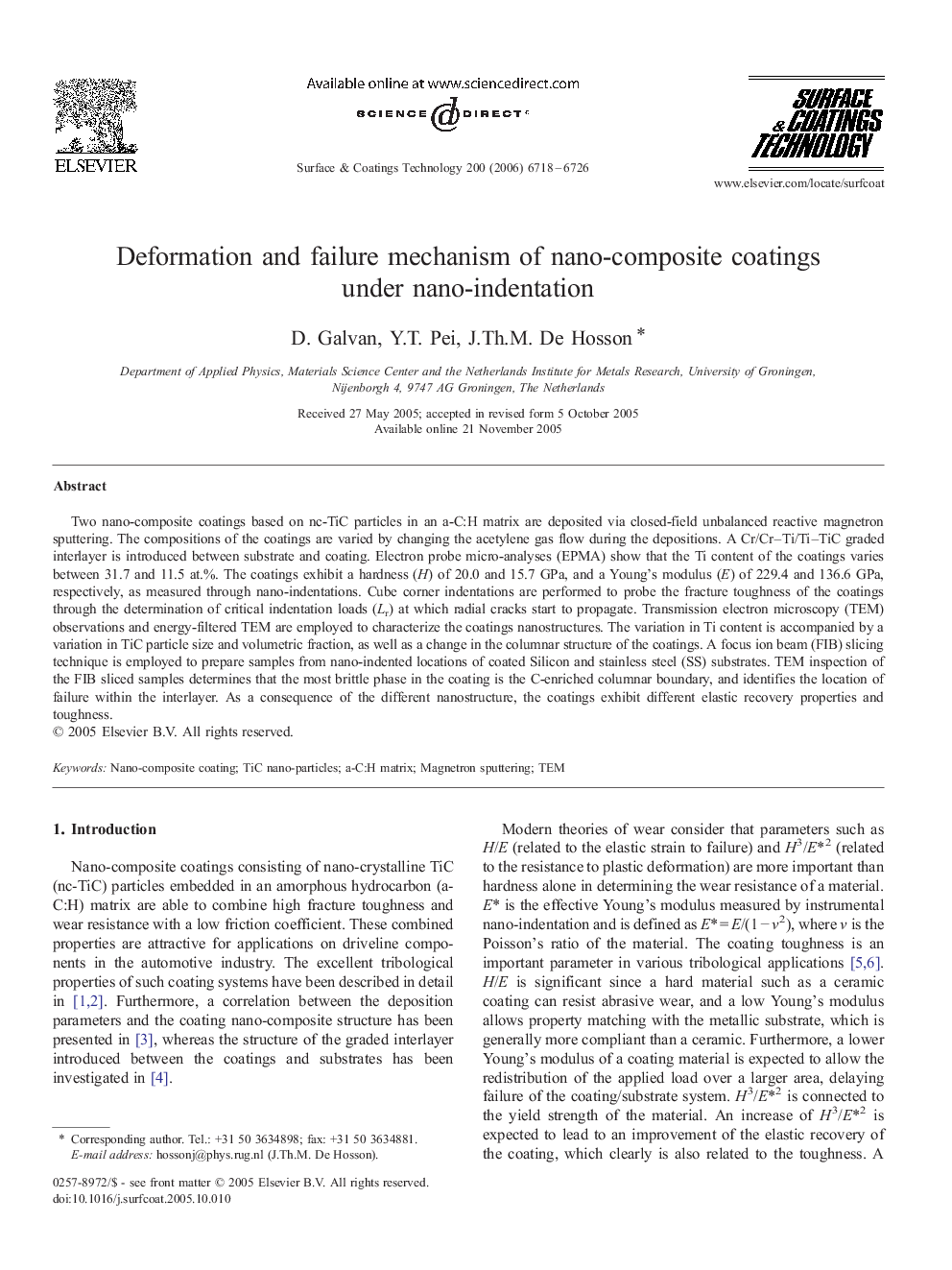| Article ID | Journal | Published Year | Pages | File Type |
|---|---|---|---|---|
| 1663137 | Surface and Coatings Technology | 2006 | 9 Pages |
Two nano-composite coatings based on nc-TiC particles in an a-C:H matrix are deposited via closed-field unbalanced reactive magnetron sputtering. The compositions of the coatings are varied by changing the acetylene gas flow during the depositions. A Cr/Cr–Ti/Ti–TiC graded interlayer is introduced between substrate and coating. Electron probe micro-analyses (EPMA) show that the Ti content of the coatings varies between 31.7 and 11.5 at.%. The coatings exhibit a hardness (H) of 20.0 and 15.7 GPa, and a Young's modulus (E) of 229.4 and 136.6 GPa, respectively, as measured through nano-indentations. Cube corner indentations are performed to probe the fracture toughness of the coatings through the determination of critical indentation loads (Lr) at which radial cracks start to propagate. Transmission electron microscopy (TEM) observations and energy-filtered TEM are employed to characterize the coatings nanostructures. The variation in Ti content is accompanied by a variation in TiC particle size and volumetric fraction, as well as a change in the columnar structure of the coatings. A focus ion beam (FIB) slicing technique is employed to prepare samples from nano-indented locations of coated Silicon and stainless steel (SS) substrates. TEM inspection of the FIB sliced samples determines that the most brittle phase in the coating is the C-enriched columnar boundary, and identifies the location of failure within the interlayer. As a consequence of the different nanostructure, the coatings exhibit different elastic recovery properties and toughness.
